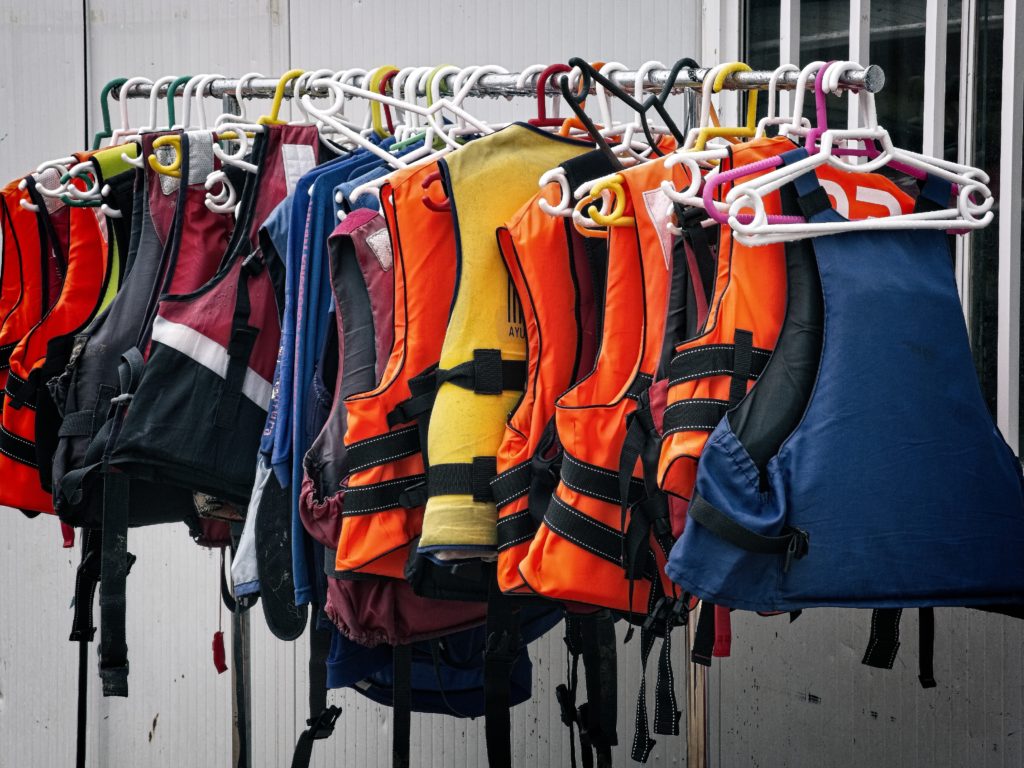Digital screens have become an integral part of transport communication, located at stations, airports, ports and terminals.
Increasingly, smart displays are now making their way onto vessels and ships too, thanks to innovations in the technology and improved remote connectivity.
Digital signage on ferries, in particular, is becoming a popular platform serving a range of dynamic functions. Based on the South coast, TrouDigital is well placed to serve this need, currently working closely with a local ferry company.
1. Geofencing and other smart triggers
Screen solutions today are smarter than ever before. Previously, screens have been used for PowerPoint-like presentations that play on a repetitive loop, rarely updated. In environments where audiences don’t spend very long or visit that often, this can be excusable, going unnoticed. But for deployments with significant dwell times or regular contact, content can quickly become stale and have a negative effect.
Passengers regularly using transport services like a ferry fall into this latter category. Someone making the same journey twice a day for upwards of 30 minutes each way will quickly become desensitised and even irritated by the same looping playlist.
Smart signage for ferries overcomes this problem by using a range of external triggers to keep things fresh. Using GPS beacons, content can be triggered when a vessel enters specific geofenced areas. Triggered messages can be swapped out regularly or even used as advertising slots. Interrupting a screen presentation for announcements such as approaching the destination will engage and inform passengers.
An alternative form of smart trigger that TrouDigital are currently using onboard vessels and at other locations is RFID.
To summarise, this technology involves using tags to “tap” a reader that then serves as a trigger for a specific action. When paired with a digital signage solution, different tags (often combined with objects in retail environments) can be associated with different types of medium, for example, a product video in a store, which plays on a screen when activated.
2. A bespoke advertising platform
Anyone who has used the underground or passed through an airport will recognise the various advertising boards that fight for your attention. Advertising on transport is extremely popular due to the guarantee of high footfall and often long dwell times. Someone sat in one place for a long time will have little else to look at than overheard posters – other than of course their phone.
The competition for attention, waged by social media feeds, is fierce and threatens advertising budgets.
The problem with advertising is it is too often irrelevant and intrusive. Our digital signage solution for ferries overcomes this challenge with the power to schedule adverts. Content can be shown at certain times of the day, week, month or year. More specifically, this could mean at particular points of the journey.
For our project with Wightlink, we have developed a bespoke advertising platform as an add-on to our signage software. This platform acts as the middle agent between network hosts and advertisers, making the whole process as seamless as possible. Hosts can reject inappropriate content, set advertising rates for screen time and take payment over the system.
3. A powerful sales tool
Digital signage on ferries is often thought about as an information channel. While is this certainly true and will be touched upon next, it also has a very tangible ROI as a sales tool.

Digital screens onboard vessels and at terminals are probably the most effective way to promote special offers for your service, whether this is season tickets, family discounts or summer sales. Messages to commuters such as “did you know you could be saving £x with our corporate package?” are highly effective at engaging audiences.
There is no better time to advertise to your target audience than during a journey itself. During this time, they will be far more receptive to thinking about your service than when they see a Facebook ad, for example, while in the middle of something else.
Utilising special discount codes on your signage promotions allows ferry companies to directly track the ROI of their promotions, knowing which deals were generated as a direct result. Used in this way, digital signage for ferries can pay for itself in no time, with evidence to support the investment.
4. Intelligent journey dashboards
The most effective digital signage is tailored to its environment. Rather than deploying a one-size fits all solution to a variety of industries, TrouDigital has strived to create a ferry specific offering. We call this our “Intelligent Journey Displays”.
In addition to the adverts mentioned previously, ferry companies can display a wide variety of travel information in the form of a dashboard. This might include the weather, nautical conditions, the speed of the vessel and a real-time ETA. These are achieved through Open Data sources and GPS technology.
More than just that, other modes of transport can be represented on the same dashboard. Connected services such as local buses and taxi companies can be integrated providing huge value to both passengers and these transport companies.

There is a huge opportunity to combine these integrations with paid advertising, maximising ROI. A ferry company might choose to only advertise one particular bus company or one taxi company on their network. Introducing a sense of exclusivity is a great way to increase prices and nurture local business partnerships, making the network itself a sought-after communication channel.
5. Healthy and safety videos
So far we have discussed content such as live travel information, advertising and sales promotions. One area not to be overlooked is health and safety related content. The importance of this is paramount in the travel industry.
It is, of course, a legal requirement for ferry companies to clearly display safety information to passengers, from how to put on a life jacket to which exits to use in the event of an emergency. Failure to effectively convey this vital information can be fatal.
For years, the Wightlink service (like many others to this day) was showing their health and safety videos through an onboard DVD player. There are a number of shortcomings with this outdated approach.
Beyond putting a lot of pressure on staff, DVDs are extremely cumbersome to update and distribute. As a consequence, health and safety videos were not updated as often as they might have been. Small changes would create a great deal of work where new DVDs would have to be physically burned, delivered and replaced.
As part of our installation for Wightlink, this old-fashioned solution was substituted for our cloud-connected media players. This meant that health and safety content such as videos could be swapped out almost instantly and scheduled to play at the start of journeys.
For even more control, we introduced RFID triggering which we talked about earlier. This allows staff to trigger safety videos (or any other content) on command. On journeys with bad weather and wave turbulence, for instance, a captain might want to show a relevant video.


